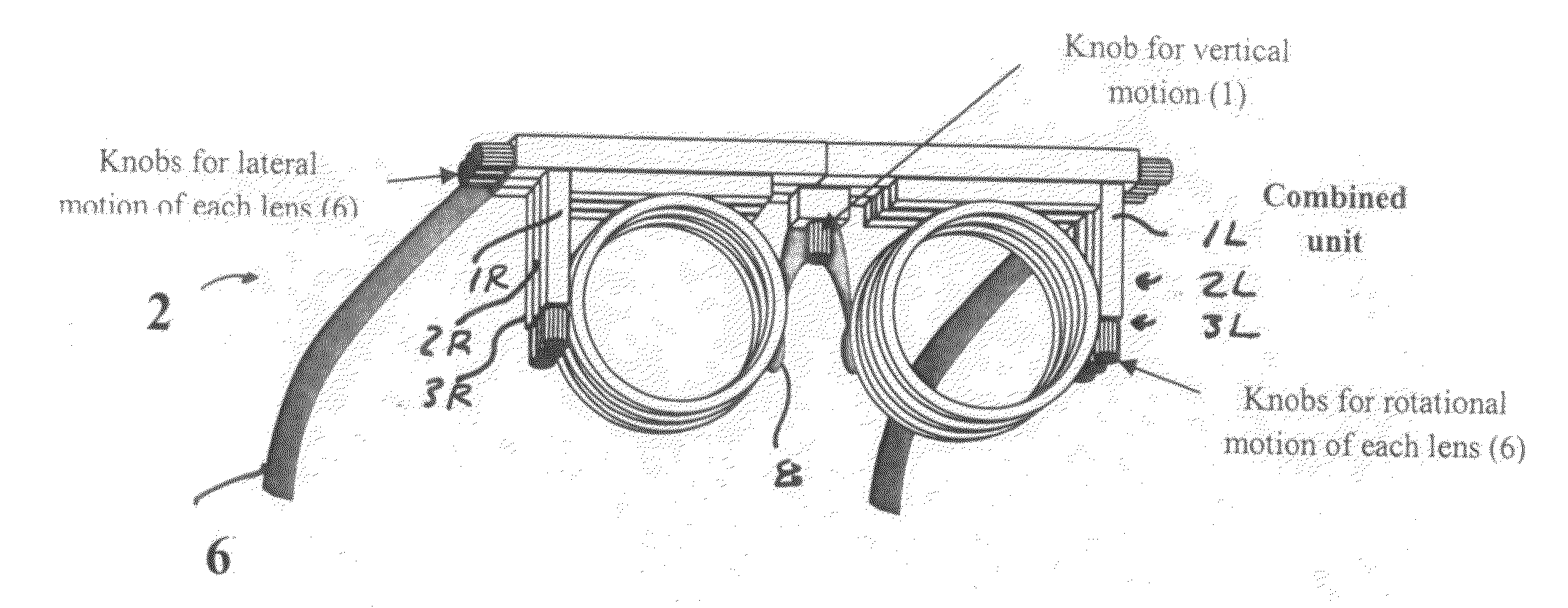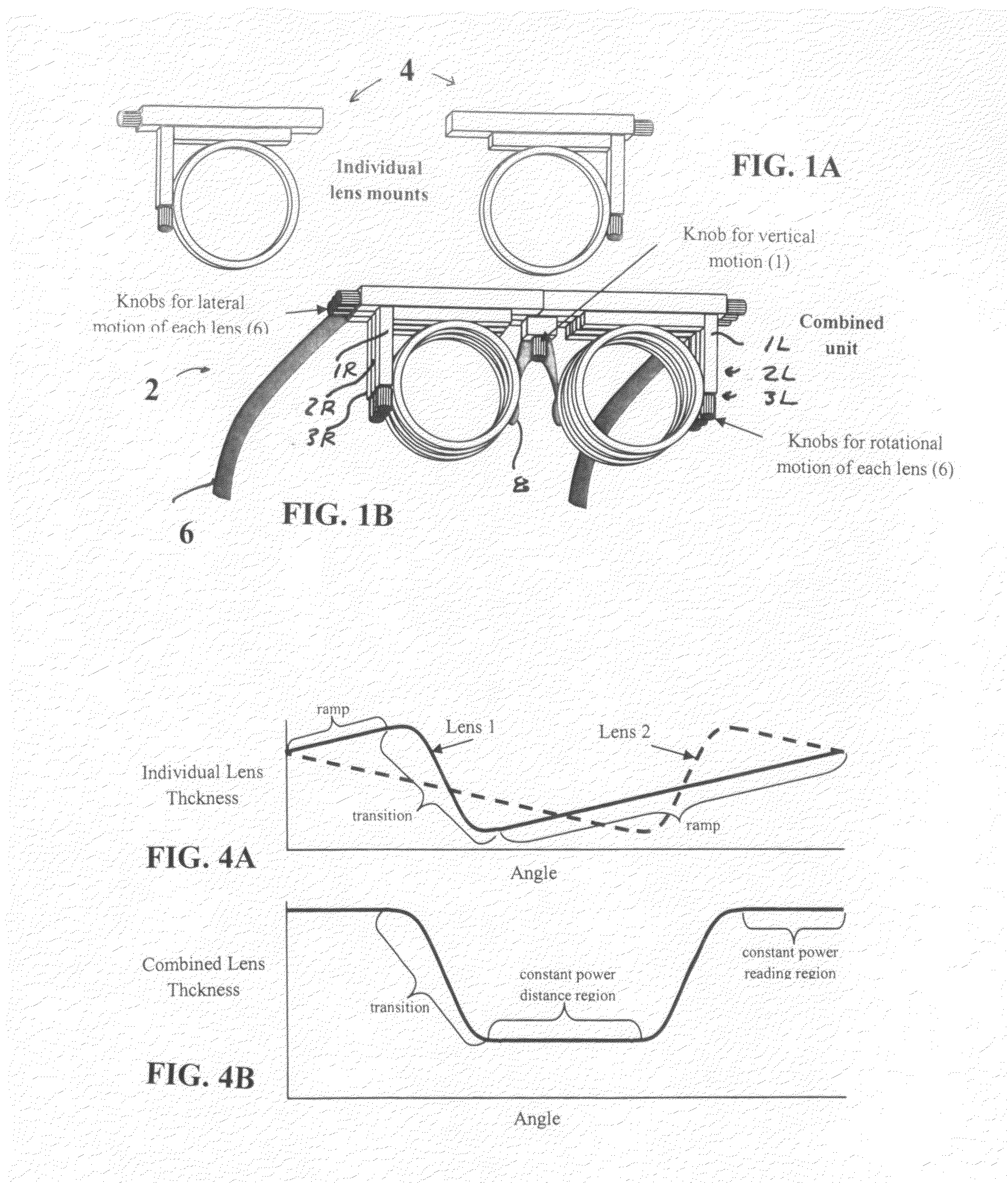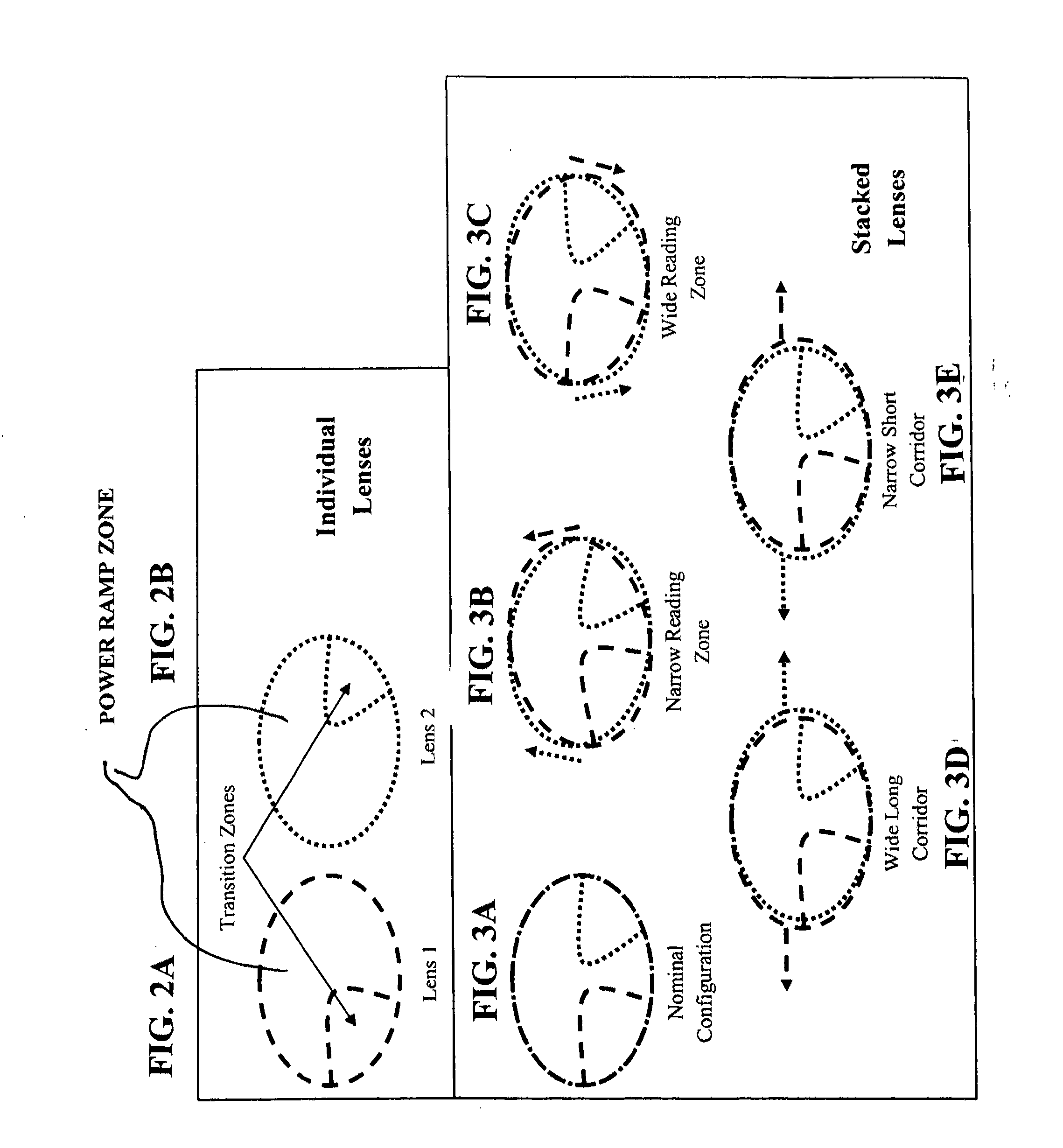Device and process for progressive addition lens design
a technology of progressive addition and lens design, applied in the field of progressive addition lenses, can solve the problems of excessive distortion and aberration in the transition region, impaired focus ability, unpleasant,
- Summary
- Abstract
- Description
- Claims
- Application Information
AI Technical Summary
Problems solved by technology
Method used
Image
Examples
Embodiment Construction
[0018]Applicants have devised a device for determination of patient's progressive addition lens design preference (referred to hereinafter as “Test Unit”) which can create an adjustable progressive addition effect which spans a design space adequate to determine the patient's progressive preference. This Test Unit uses two special and unique lenses in front of each eye in addition to a lens with the patient's base correction. The Test Unit consists of 6 lens mounts, with 3 per eye. Each lens mount shown at 4 in FIG. 1A contains a lens: one for the base prescription 1L and 1R and two for the adjustable progressive addition lens pair 2L and 3L and 2R and 3R as shown in FIG. 1B. Each mount is adjustable in rotation and horizontal side-to-side translation. The base prescription lenses 1L and 1R correct the power and astigmatism of the patient without any progressive correction. The adjustable progressive addition lenses 2L, 3L, 2R and 3R provide only the progressive add power but in a m...
PUM
 Login to View More
Login to View More Abstract
Description
Claims
Application Information
 Login to View More
Login to View More - R&D
- Intellectual Property
- Life Sciences
- Materials
- Tech Scout
- Unparalleled Data Quality
- Higher Quality Content
- 60% Fewer Hallucinations
Browse by: Latest US Patents, China's latest patents, Technical Efficacy Thesaurus, Application Domain, Technology Topic, Popular Technical Reports.
© 2025 PatSnap. All rights reserved.Legal|Privacy policy|Modern Slavery Act Transparency Statement|Sitemap|About US| Contact US: help@patsnap.com



